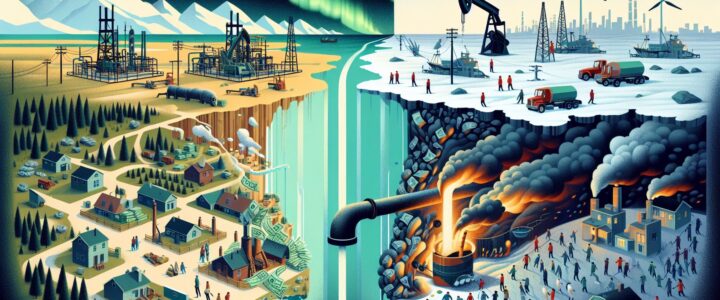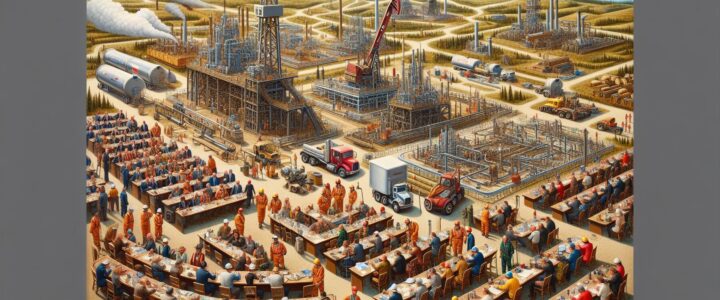We are one of the main foundations in charge of the propagation of new energies, and making these new energies known as the new alternatives to be used in our homes, jobs and just about anywhere. We also like to broadly advertise everything related to our activities, in order to make our movement grow so that everything can be done in favor of planet Earth.
The Unprecedented Growth in Canada’s Oil & Gas Industry: Implications and Opportunities

The oil and gas industry in Canada has experienced remarkable growth over the years, cementing its position as a key player in the global energy market. This thriving sector is characterized by a complex web of exploration, production, refining, and distribution activities. It is also a significant contributor to the country’s economic growth and job creation. In this article, we will delve into the fascinating world of Canada’s oil and gas industry, exploring its challenges, opportunities, and the impact it has on both national and global scales.
Catalyst for Economic Growth and Job Creation
Canada’s oil and gas industry has been a significant catalyst for economic growth, making valuable contributions to the country’s GDP. It has attracted substantial foreign investment and created numerous job opportunities in various regions. The industry’s robust nature and extensive supply chain have led to the development of a diverse range of specialized services, such as drilling, well completion, and pipeline construction. These segments have contributed to stimulating economic activity and attracting skilled workers from various sectors.
The Resource Riches of the Western Sedimentary Basin
One of the main driving forces behind Canada’s oil and gas industry is the Western Sedimentary Basin, which spans over 1.4 million square kilometers. This vast region is abundant in various hydrocarbon resources, including natural gas, crude oil, and oil sands. The oil sands found in a region known as the Athabasca Oil Sands, located in Alberta, are particularly noteworthy. These oil sands contain a mixture of bitumen, sand, water, and clay, requiring complex extraction processes.
Technological Innovations & Environmental Challenges
The extraction of oil sands presents both opportunities and challenges for the industry. Technological innovations have played a crucial role in unlocking the potential of these resources, making previously uneconomical deposits profitable. However, the environmental impacts of oil sands extraction are a source of concern. The industry has been actively involved in implementing various environmental mitigation measures, including land reclamation and the reduction of greenhouse gas emissions. Sustainable practices and the development of cleaner energy alternatives are pivotal in addressing these challenges while ensuring continued growth.
Canada’s Position in the Global Energy Market
Canada ranks as one of the world’s top oil and gas producers, contributing significantly to the global energy market. Its vast reserves, advanced extraction techniques, and well-established infrastructure have positioned the country as a reliable supplier. Canada has developed strong international trade relations, exporting energy products to various countries, including the United States, China, and India. However, the industry’s position is not without its vulnerabilities, as global oil prices and geopolitical factors remain influential in determining its stability and profitability.
Navigating an Evolving Landscape
The oil and gas industry in Canada is not immune to evolving market dynamics and changing consumer preferences. As the world transitions towards cleaner energy sources, the industry faces both challenges and opportunities. Canadian companies are increasingly diversifying and investing in renewable energy, including wind, solar, and hydroelectric power. This transition enables the industry to adapt to changing market demands while remaining at the forefront of energy innovation.
Conclusion
Canada’s oil and gas industry has emerged as a powerhouse, driving economic growth, job creation, and technological innovation. As the world grapples with the need for sustainable energy solutions, the industry faces a pivotal moment. By embracing cleaner energy alternatives and implementing stringent environmental practices, Canada’s oil and gas industry can play a crucial role in shaping a sustainable energy future. With its resource richness, technological advancements, and adaptability, the industry is poised to make a lasting impact on the global energy landscape.








